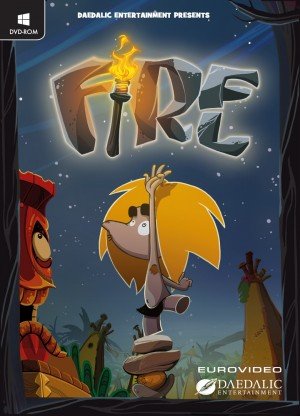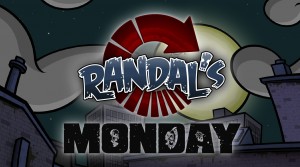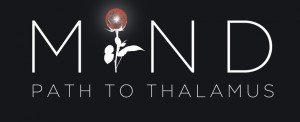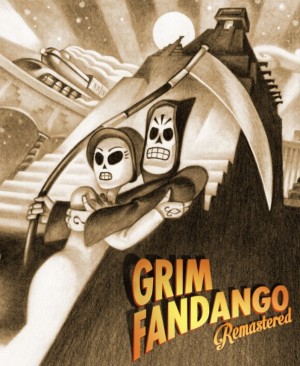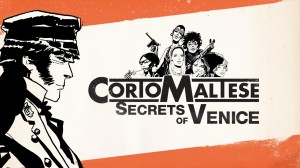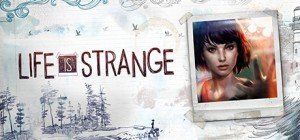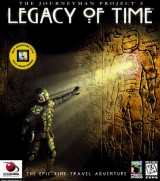Review for Fire

German developer Daedalic Entertainment has established itself as a household name on the adventure scene with traditional point-and-click games like The Whispered World and the Deponia series. Fire, their latest effort, takes a more casual approach to storytelling, delivering a visually pleasant but extremely short environmental puzzler fit for the whole family to crack together. While the highly linear approach to problem-solving is engaging, and exploring each of the (admittedly small) world’s ten levels remains intriguing throughout, seasoned veterans won’t find much challenge here, and will breeze through the lion’s share of the game rather quickly.
The story behind Fire is quickly relayed without words: Kicked out of his village for letting its precious firepit extinguish during his watch, Neanderthal Ungh sets out to scour the prehistoric (yet fantastical) world for a new source to start a flame. During a psychedelic vision from eating some rotten fruit, a nature spirit tells Ungh to seek out what amounts to ten magical fireflies, each one hidden in a different area of the world that will open up a portal to the next. In each area he passes through, Ungh will need to interact with his environments and advance past a battery of puzzles to get his hands on the elusive prize and advance to the next stage.
The different levels Ungh travels through include stalwarts like ‘Cave World’, ‘Volcano World’, and ‘Ice World’. But the game doesn’t aim to create a realistic prehistoric universe, so players will also find themselves traversing ‘Dragon World’, piloting a time machine, and donning a space suit in ‘Moon World’. Each location is full of colorful, hand-painted cartoon scenery and creatures drawn from family-friendly imagination. Turtle-like ceramic pots, a jungle-creature barbershop quartet, monkeys administering IQ tests, jumping rocks, and giant frogs all populate the lands you’ll traverse. For good measure, Daedalic has included plenty of Easter eggs to giggle at, with references to H.G. Wells’ The Time Machine, Stanley Kubrick’s 2001: A Space Odyssey, and an unexpected brief, easy round of Space Invaders.
Puzzles in Fire operate in two different ways. Moving the cursor over an interactive object will result in it lighting up in one of two colors. A yellow cursor means Ungh can interact with the object directly, while blue indicates players can manipulate the object on their own. Generally, you’ll either have to make Ungh pick up a certain item needed to interact with a specific object in the environment, or activate and move items around to create a desired effect. Of course, accessing items and objects to progress might in itself require a separate puzzle to be solved first. Very seldomly, the game switches tack and will throw a movement-based or timing puzzle your way, though these are quick to master. The first seven or eight worlds consist of only three side-by-side screens to navigate back and forth using on-screen directional arrows, while the last few extend that number marginally.
Fire politely requests that you wear your lateral thinking cap, as its puzzles often require out-of-the-box logic. During the course of the game, you’ll encounter a wide variety of obstacles that need to be approached in differing ways. One scenario involves strategic shape-shifting, while another requires cycling between day and night, causing some alterations in the environment accordingly. Other puzzles are based on pitch-perfect sound recognition; navigating a rock-strewn underground lake on the back of an octopus, letting you move one space in any cardinal direction, but never in the same one twice; and a segment where you must navigate past moon traps using zero-gravity space thrusts. Almost every stage offers something new and unexpected, adding greatly to the joy of exploration.
The challenge is fairly light, however, and experienced players will reach the end of their journey after only two or three hours. Once or twice, a section took me longer than expected due to a poorly clued puzzle. This is where Fire’s complete lack of spoken or written dialog came as a detriment; even when Ungh was communicating with a fellow Neanderthal in grunts and growls, I was left having to make sense of what to do through hard-to-interpret pictographs or gestures. Ungh alone is rarely much help, offering nothing but a confused response to many interactive items, indicating that he’s just as clueless as you.
Even with its lack of overt clues, the game is often a bit hand-holdey by virtue of being so streamlined. Pressing the spacebar reveals all interactive areas, on average around four to five per screen. Ungh rarely interacts with his surroundings unless specifically required to by a puzzle, and inventory is limited to the single item he’s currently carrying. There’s usually no more than a couple items to pick up in a level, anyway, so using the right one is just a matter of deciding between A and B. And given that each location is generally limited in size to three screens, process of elimination will typically lead to the correct solution before long.
To add a little bit of replay incentive, each level has three hidden Fire sigils to collect, which unlock bits of concept art in the main menu. At times I simply had to search the backgrounds carefully to see one cheekily peeking out at me from behind a tree trunk or other obstruction. Other times, manipulating objects in certain patterns or playing around with the environment will reveal one for you to collect. There is some challenge to be had here – I only completed the set of three in one or two worlds – and worlds can be revisited from the map screen at any time after completing them once, but returning to a previously cleared stage to find a missed sigil or two resets all of that world’s puzzles as well, leading to tedious repetition if you want to get them all.
Tilo Alpermann, having previously composed the score for Daedalic’s adventure The Night of the Rabbit, returns on soundtrack duty for Fire, creating a curious mix of themes. Any given level may feature distinctly Bohemian folk music, upbeat Caribbean tunes, or songs made to clap and whistle to. While the music lends the game a lot of lightheartedness and humor, its quirky whistles and pops won’t be everyone’s cup of tea, and can quickly cross over from snappy to grating due to its repetitiveness.
Overall, Fire simply doesn’t have a lot of staying power. While it lasts, the constantly changing environments you’ll explore offer some engagement, but it’s all over too quickly, leaving little reason to want to return to it for more of the same. The first time through you’ll catch yourself with an amused smirk or two as Ungh flies into a comic rage when he doesn’t get his way, but the limited difficulty that will appeal to younger audiences will leave others longing for more of a challenge. It’s pretty and charming, and it seems like a world I would have enjoyed getting lost in for a longer period of time, but in the end I felt a bit short-changed on its promise.




